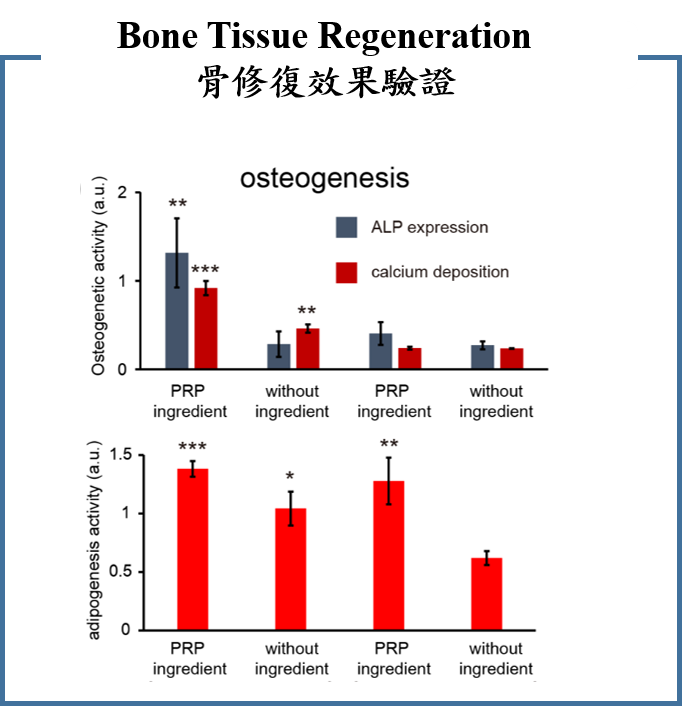| Technical Name | Vapor-Phased Construction of Multifunctional and Tunable Bone Tissue Products | ||
|---|---|---|---|
| Project Operator | National Taiwan University | ||
| Project Host | 陳賢燁 | ||
| Summary | This technique utilizes vapor-phase construction to create multifunctional osseous tissue repair devices. While past vapor deposition processes would only allow the production of biofilms, our innovative procedure allows the production of 3D porous nanomaterial with exceptional biocompatibility and stability. By tuning the speed of sublimation and deposition, the pore size and mechanical structure of the parylene-based scaffold can be modified. The scaffold also allows fixing of biomolecules such as platelets rich plasma (PRP) onto its matrix. Tailored biomimicry microenvironments for skeletal tissue cells are created to manipulate and induce bone cell differentiation from stem cells. With adjustable stiffness and porosity, these scaffolds serve as promising matrices for bone cell encapsulation, allowing various cell physiological processes and osseous tissue repair mechanisms to occur. Altering these parameters could potentially help construct future customized orthopedic implants. |
||
| Scientific Breakthrough | Procedural Innovation: Overcoming limitations set by past technologies, this technology implements basic principles of thermodynamics and manipulates vapor sublimation and deposition of molecules under certain thermodynamic conditions to create porous material. The procedure also involves encapsulation of platelets rich plasma (PRP). |
||
| Industrial Applicability | Our porous device, with both innovative procedure and product multifunctionality, is without doubt cutting-edge technology when compared to current commercialized products. Platelets rich plasma (PRP) can be easily loaded during the process, allowing further customization of products to strengthen its market potential in the precision medicine market. This procedure barely delivers any environmental impact, corresponding with essential requirements of green manufacturing. Commercial grade mass-production is therefore feasible. In terms of the choice of material, parylene, being USP Class VI approved, holds FDA approval records and hence ensures future products’ short process and certainty for certification. |
||
| Keyword | Vapor sublimation Vapor deposition Porous material Poly-p-xylylene (Parylene) Multifunctional Bone Tissue Regeneration Platelet-rich plasma (PRP) Green process | ||
- hsychen@ntu.edu.tw
other people also saw







